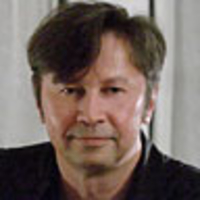Andy Warhol is undeniably America’s most celebrated artist, but he is also one of its most misunderstood. Nearly everyone knows Warhol for his Pop Art paintings of Campbell’s Soup Cans and Marilyn Monroe, while others acknowledge him for launching the rock band The Velvet Underground; making avant-garde films, such as Lonesome Cowboys and Trash; and founding Interview magazine. However, few people have seen Warhol’s prolific production of paintings from the final phase of his life. Andy Warhol: The Last Decade, which is on view at the Milwaukee Art Museum through January 3, presents some 50 paintings made in the final years before the artist’s death in 1987, while giving us the chance to re-evaluate these works within his complete oeuvre.
Click Image To View Our Gallery of Warhol: The Last Decade

Rarely seen Warhol self-portraits from 1978 offer a good introduction to the survey. Self‐Portrait Wallpaper decorates the walls of the entranceway to the show with a repeated, youthful depiction of the artist, while Self‐Portrait (Strangulation), a colorful 10-part painting, captures the writer Glenn O’Brien’s hands around Warhol’s neck, pretending to choke him. Next up are two reversal paintings, where the blacks are rendered in white, of Marilyn and Mona Lisa, are minimal in palette and lead nicely into a group of more abstract works.
The Oxidation Paintings, which reveal marks made by urinating on canvas painted with a metallic paint, and the Shadow paintings, which portray a ghostly shadow supposedly made from lighting children’s blocks, along with a group of later Rorschach paintings, are the most abstract works on view. The show makes the argument for a pair of large Egg paintings and several paintings of yarn to be considered abstractions; but the eggs are still representational, even on a grand scale, and the yarn works are just plain kitsch pieces, which were originally made as a commission for a yarn manufacturer.
Warhol has the biggest challenge of the decade when he starts collaborating on paintings with Jean-Michel Basquiat and Francesco Clemente—two art stars of the 1980s. The idea for the collaboration seems to have been bridged by Zurich art dealer Bruno Bischofberger, who ended up with all of the works. With few exceptions, including Alba’s Breakfast, which is part of this show, the three artists working together was a disaster. Everyone painted over one another. It was only when Warhol and Basquiat collaborated on their own that the concept really clicked.
The best thing that came out of the collaborations for Warhol was that he had started painting by hand again. Basquiat’s obliteration of his silkscreen marks forced Warhol to respond with a brush. After The New York Times panned the Basquiat/Warhol show at Tony Shafrazi Gallery in 1985, the two artists went their own ways, but Warhol had been rejuvenated. With the aid of a new, expansive studio, he started painting big. Double $5/Weightlifter from 1985-86 is a massive black-and-white acrylic on linen painting that combines a muscleman with a store-sticker price.
Investigating signs and ads, such as Repent and Sin No More! and Steaks 99 (cents), which related to his early-‘60s works, Warhol continued to paint in black-and-white over the next year, before returning to self-portraits. The self-portraits of 1986 are his most radical, showing the artist as a floating head, wearing a spiked-out silver wig. The series covers a variety of death mask-like poses with alternative cropping, while introducing the use of camouflage as a way to layer pattern and color. Dropping his self-image from the picture, Warhol next turned the pure camouflage works into a body of referential yet abstract paintings, which were most often on a very large scale.
The last series of paintings in the show is The Last Supper, which is the largest series of works that Warhol ever produced. Varying in techniques and styles, the three paintings in the final gallery are all massive. One depicts the apostles in black-and-white acrylic paint, overlaid with a colored price sign and Dove and GE logos; another doubles Leonardo da Vinci’s masterpiece, silkscreened on a yellow field; while the third, gigantic canvas repeats Christ’s head 112 times. Much has been made about the religious subject matter and Warhol’s untimely death the following year, but the choice of subject matter seems to have more to do with coincidence and an opportunity to show in Italy than it does with fate.
While not conclusive in summing up Warhol’s last decade of work—the toys, crosses, shoes, guns, dollars signs, and final celebrity portraits are missing—the show, which is accompanied by a comprehensive catalogue, published by Prestel, presents a solid point of departure to discovering the unknown work of an artist that may forever remain a mystery.
A related show, Andy Warhol: Pop Star , which shows earlier Warhol works from the collection of the museum, as well as local collectors, is also on view at the Milwaukee Art Museum through January 3. After Milwaukee, Andy Warhol: The Last Decade travels in 2010 to museums in Forth Worth, Brooklyn, and Baltimore.
Plus: Check out Art Beast for galleries, interviews with artists, and photos from the hottest parties.
Paul Laster is the editor of Artkrush.com, a contributing editor at Flavorpill.com and Art Asia Pacific, and a contributing writer at Time Out New York and Art in America.






